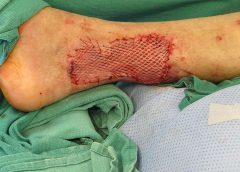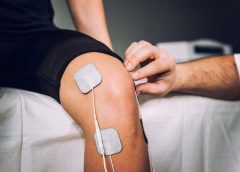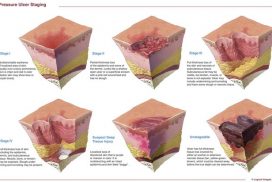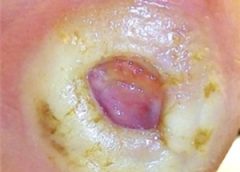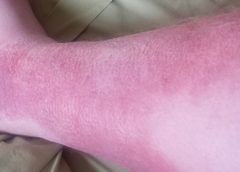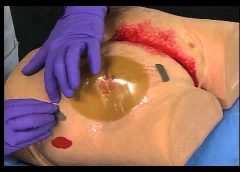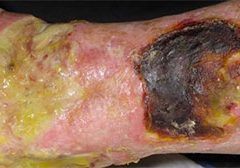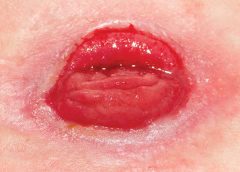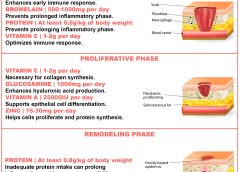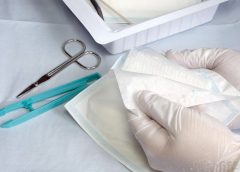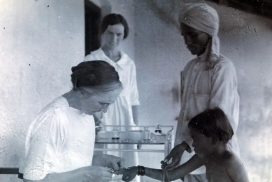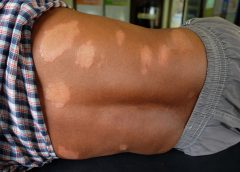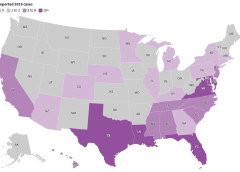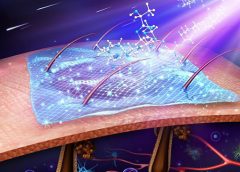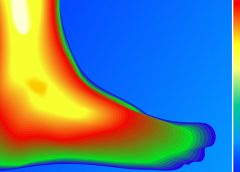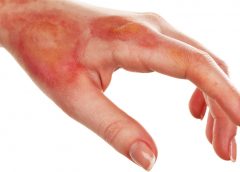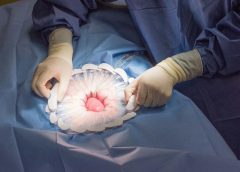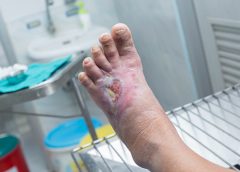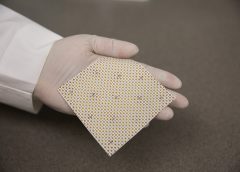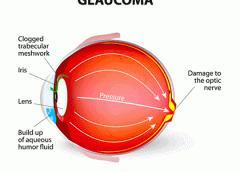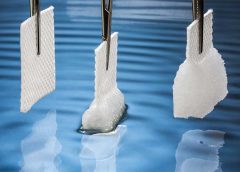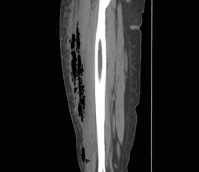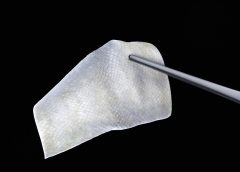Antibiotic overuse contributes to the problems of antibiotic resistance and healthcare acquired infections, such as Clostridium difficile. Antibiotic stewardship programs improve patient outcomes, reduce antimicrobial resistance, and save money. These programs are designed to ensure patients receive the right antibiotic, at the right dose, at the right time, and for the right duration. (more…)
Read MoreSearch Results for: sue
Better Skin Grafts – take only one layer
Research shows that a skin-graft harvesting system aids chronic wound recovery and reduces care costs by accelerating the healing process.
More than six million cases of chronic wounds cost $20 billion each year in the United States. Diabetic ulcers, pressure sores, surgical site wounds, and traumatic injuries to high-risk patients account for most wounds that won’t heal. (more…)
Read MoreHow to benefit from electrical stimulation for the treatment of chronic wounds
One of the most amazing things about the human body is its ability to repair itself. Lacerations, punctures, abrasions all heal with little or no care. Chronic wounds, those that persist day after day, are a small subset of wounds but they compose a troublesome minority. They include, but are not limited to, diabetic foot ulcers (DFU), venous leg ulcers (VLU), and pressure ulcers (colloquially known as bedsores). These represent the body’s failure to fix itself. (more…)
Read MoreMeeting the nutritional needs of elderly cancer patients
Although it is described as “one of society’s greatest achievements,” with the aging population, cancer incidence is expected to accelerate rapidly, as 50% of cancer occurs within this age group.(1)
Nutrition therapy is a crucial component of cancer care. Early and continuous nutrition management is necessary to avoid malnutrition, as this is associated with poor clinical outcomes.(2) Often, the elderly already face chronic comorbid conditions, such as high blood pressure, heart disease, lung disease, diabetes, kidney disease, bone disease and arthritis, further complicating their care.(3) (more…)
Read More2018 American Nurse Today Education Guide
Moving ahead with your nursing education
Deciding to continue your education is exciting as well as daunting. You’ll need support from your friends and family, as well as your colleagues and fellow students. But you also can get support from the nursing profession. In this article, you’ll find information about a variety of resources to aid you along this next step in your career.
[read more ->]
Ready, set, go… to school!
With 79.6% of employers now requiring or having a strong preference for nurses with a baccalaureate degree and a growing demand for nurses, there’s no better time to return to school.
[read more ->]
Frontiers of nursing education

Is an accelerated nursing program right for you?
Are you up for the challenge of an accelerated nursing program? You can earn your degree quickly and be off the races in your career, but these programs require dedication, self-discipline, and an ability to immerse yourself in the learning experience.
[read more ->]
Returning to nursing school? Keys to success

Ready to change specialties?
The opportunities within nursing are practically limitless. You can choose patient care, education, pharmaceutical sales, research…the list goes on and on. That’s part of the challenge. With so many choices, you need to know yourself and what you want as well as understand what will be required to get you to this next stage in your career.
[read more ->]
Lifelong Learning: Is a postmaster’s certificate the right option for you

Interprofessional education
Imagine the depth of knowledge you would gain by learning along side students in other healthcare disciplines. In education settings that embrace interprofessional education, students learn with, from, and about each other to enable effective communication and improve patient outcomes.
[read more ->]
Can nursing meet the 80/2020 goal?
In 2010, a goal was set to have 80% of nurses with BSNs by 2020. Read this article to find out what kind of progress we’ve made so far.
[read more ->]
Your doctorate and the path to persistence
High attrition rates for doctoral nursing students (reported to be as much as 50%) in the face of an increasing demand for PhD-prepared nursing faculty is a growing concern. So, what’s at the crux of this problem and how do we solve it? When I was a doctoral student, I researched how other doctoral students balanced work, family, and school. The goal was to learn more about the strategies used by these students.
[read more ->]2017-2018 Education Guide Read More
Search Wound Care Advisor
3 reasons why cornea is the new Glaucoma
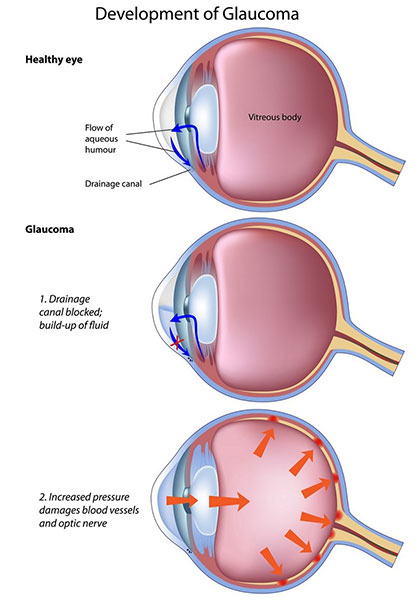
Over the past few years, this pace of change has been very evident in glaucoma, where minimally invasive procedures have greatly diminished the frequency of trabeculectomy and tube shunt procedures. In this issue of OSN, our cover story focuses on a specialty that’s now moving as quickly as glaucoma. And here are three reasons I believe cornea will continue to be the “next big thing” in eye care: (more…)
Read MoreFlexible Materials Innovations Advances Wound Care
The cutting-edge of wound care is a progressively flexible one, where textiles, foams, and films are applied to wound management technology with the goal of synergistic physiological function. These innately intuitive materials underpin the emerging medical solutions that practitioners and their patients are finding more effective than traditional wound care and closure methods. With an aging population more frequently seeking medical care and a surge in diabetes diagnoses, market analysts predict a continuing rise in demand for advanced wound care management products, fueling an annual industry growth rate of 6.4% over the next five years. (more…)
Read MoreA Conversation With the PJ Medical Director
Necrotizing Fasciitis: Pearls & Pitfalls
A 39-year-old woman presents to the ED with leg pain and fever. She initially noted redness and pain above her knee 2 weeks ago and was evaluated at an outside hospital. She completed a 10-day course of oral antibiotics for cellulitis. Over the last two days, she has had progressive leg swelling of her entire right thigh. The pain is now so severe that she is having difficulty walking. Her past medical history is negative for diabetes mellitus, chronic liver disease, or alcohol and IV drug use.
On exam, she is febrile to 102.7 F, heart rate is 96 bpm, and blood pressure is 112/65. She has a 12 cm area of faint erythema on her right thigh and tenderness to palpation of her entire right leg with diffuse edema. There is no ecchymosis or bullae formation. (more…)
Read MoreWound healing in diabetic patients improved by Light-inducible antimiRs
MicroRNAs are interesting target structures for new therapeutic agents. They can be blocked through synthetic antimiRs. However, to date it was not possible to use these only locally. Researchers at Goethe University Frankfurt have now successfully achieved this in the treatment of impaired wound healing with the help of light-inducible antimiRs.
MicroRNAs are small gene fragments which bond onto target structures in cells and in this way prevent certain proteins from forming. As they play a key role in the occurrence and manifestation of various diseases, researchers have developed what are known as antimiRs, which block microRNA function. The disadvantage of this approach is, however, that the blockade can lead to side effects throughout the entire body since microRNAs can perform different functions in various organs. Researchers at Goethe University Frankfurt have now solved this problem. (more…)
Read MoreFish Skin for Human Wounds: Iceland’s Pioneering Treatment
The FDA-approved skin substitute reduces inflammation and transforms chronic wounds into acute injuries.
Six hours north of Reykjavik, along a narrow road tracing windswept fjords, is the Icelandic town of Isafjordur, home of 3,000 people and the midnight sun. On a blustery May afternoon, snow still fills the couloirs that loom over the docks, where the Pall Palsson, a 583-ton trawler, has just returned from a three-day trip. Below the rust-spotted deck, neat boxes are packed with freshly caught fish and ice. “If you take all the skins from that trawler,” says Fertram Sigurjonsson, the chairman and chief executive officer of Kerecis Ltd., gesturing over the catch, “we would be able to treat one in five wounds in the world.” (more…)
Read More

